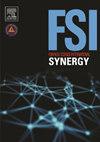无人机取证重新定义:集成实时、数字和非数字证据采集系统
Q1 Social Sciences
引用次数: 0
摘要
无人机技术的快速发展和扩散导致了各种威胁的增加。特别是,利用无人机的攻击、犯罪、事故不断增加,需要系统应对。现有的应对策略主要集中在实时防御技术和政策上,如无人机的检测、识别和中和。但最近,在事故发生后,查明无人机飞行路线、驾驶员信息、事故原因的无人机取证的重要性得到了强调。无人机取证结合了传统数字取证和非数字(物理)取证的元素,现场取证技术在事件发生后立即收集和分析数据,发挥着至关重要的作用。与一般取证相比,无人机取证具有明显的技术特征,本研究提出了反映这些技术特征和收敛分析因素的系统分析框架和分析算法结构。它全面回顾了目前正在使用的主要无人机取证技术。这将有助于确保无人机取证的法律证据能力,提高其作为证据的实用性。本文章由计算机程序翻译,如有差异,请以英文原文为准。
Drone forensics redefined: Integrating live, digital, and non-digital evidence acquisition systems
The rapid development and proliferation of drone technology have led to an increase in various threats. In particular, the number of attacks, crimes, and accidents using drones is continuously expanding, and the need for a systematic response is growing. Existing response strategies have mainly focused on real-time defense-oriented technologies and policies, such as detection, identification, and neutralization of drones. However, recently, the importance of drone forensics, which identifies the flight path of drones, pilot information, and the cause of accidents after an incident, has been highlighted. Drone forensics combines elements of traditional digital forensics and non-digital (physical) forensics, and live forensics technology that collects and analyzes data immediately after an incident plays a crucial role. Drone forensics has distinct technical characteristics compared to general forensics, and this study presents a systematic analysis framework and analysis algorithm structure that reflects these technical characteristics and convergent analysis factors. It comprehensively reviews the major drone forensics technologies currently being utilized. This will help to secure the legal evidence capability of drone forensics and increase its usefulness as evidence.
求助全文
通过发布文献求助,成功后即可免费获取论文全文。
去求助
来源期刊

Forensic Science International: Synergy
Social Sciences-Law
CiteScore
4.90
自引率
0.00%
发文量
75
审稿时长
90 days
 求助内容:
求助内容: 应助结果提醒方式:
应助结果提醒方式:


